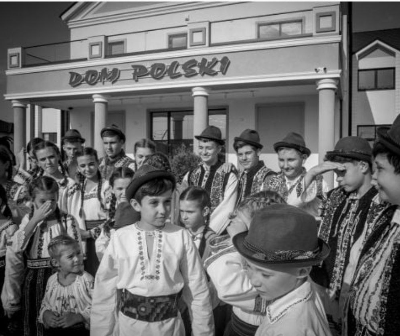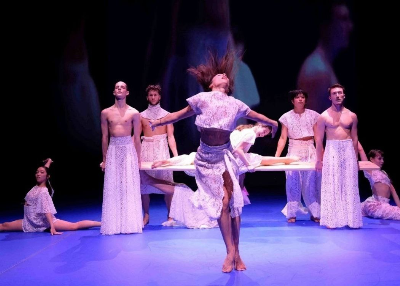
© https://culture.pl/en/article/poland-romania-cultural-season-programme-for-2025#popup
З червня 2024-го до листопада 2025 року триває унікальна програма, започаткована Польщею та Румунією, яка вже отримала статус однієї з найпомітніших культурних подій регіону. Під гаслом «Ми говоримо спільною мовою культури» ініціатива показує, як мистецтво долає кордони й створює простір для діалогу та нових форматів співпраці. Цьогоріч головний акцент роблять на візуальному та сценічному мистецтві. У Національному музеї Буковини в Сучаві стартує виставка фотонарису Юстини Мєльнікєвич, присвячена польській діаспорі в Румунії. Проєкт, що вже презентували у Варшаві та Бухаресті, повертається до свого витоку — багатокультурної Буковини. Роботи досліджують, як трансформується культурна ідентичність поляків протягом поколінь. Виставка «Було три сестри, але лише дві сорочки» розповідає історію польської громади в Румунії. Більшість її представників мешкає в селах Буковини, зокрема в повіті Сучава, де поляки складають значну частину населення. Це чадецькі горяни, які понад два століття тому переселилися до регіону. Вони спілкуються місцевим діалектом польської мови, а літературну мову діти вивчають у школах. Сьогодні поляки Румунії є офіційно визнаною національною меншиною з власним представництвом у парламенті. Сезон також включає кінопрем’єри. Документальний фільм «Chums» режисерки Емілії Снєгоської, створений у партнерстві з Інститутом Адама Міцкевича, розповідає історію двох подруг на тлі мальовничої Буковини. Стрічка вже потрапила до конкурсних програм міжнародних фестивалів Visions du Réel та Doc Fest Munich. Літературна програма зосереджена на дитячій книзі: у межах Міжнародного фестивалю літератури та перекладу FILIT у Ясах відбудуться майстер-класи та зустрічі з видавцями, письменниками й ілюстраторами. Організатори наголошують, що завдання сезону — не лише презентувати культуру сусідніх країн, а й відновити традицію солідарності та взаєморозуміння, втраченої в буремному ХХ столітті. Як зазначає директор Румунського культурного інституту Овідіу Мірон, саме спільні цінності й культурний діалог закладають фундамент для майбутнього співіснування.
Polyphony of Culture: Poland and Romania Create a Shared Artistic Space
From June 2024 to November 2025, a unique program launched by Poland and Romania has already gained recognition as one of the most notable cultural events in the region. Under the motto “We speak the common language of culture,” the initiative shows how art transcends borders and creates space for dialogue and new forms of collaboration. This year, the main focus is on visual and performing arts. At the National Museum of Bukovina in Suceava, an exhibition of a photo essay by Justyna Mielnikiewicz, dedicated to the Polish diaspora in Romania, is being launched. The project, previously presented in Warsaw and Bucharest, now returns to its source — the multicultural region of Bukovina. The works explore how the cultural identity of Poles has transformed across generations. The exhibition “There Were Three Sisters, But Only Two Shirts” tells the story of the Polish community in Romania. Most of its members live in villages in Bukovina, particularly in Suceava County, where Poles make up a significant part of the population. They are the so-called Chadean Highlanders who settled in the region more than two centuries ago. They communicate in a local dialect of the Polish language, while children study the literary language in schools. Today, Poles in Romania are an officially recognized national minority with their own representation in parliament. The season also includes film premieres. The documentary “Chums” by director Emilia Śniegoska, created in partnership with the Adam Mickiewicz Institute, tells the story of two friends against the backdrop of picturesque Bukovina. The film has already been selected for the competition programs of international festivals Visions du Réel and Doc Fest Munich. The literary program focuses on children’s books: as part of the International Literature and Translation Festival FILIT in Iași, workshops and meetings with publishers, writers, and illustrators will take place. Organizers emphasize that the season’s mission is not only to present the culture of neighboring countries but also to revive the tradition of solidarity and mutual understanding lost during the turbulent 20th century. As Ovidiu Miron, Director of the Romanian Cultural Institute, points out, it is shared values and cultural dialogue that lay the foundation for future coexistence.
@Toaca, photo: Andrzej Grabowski

©
3005